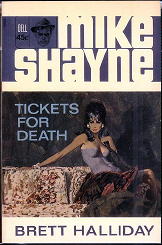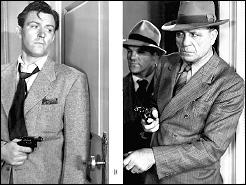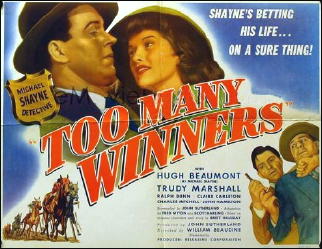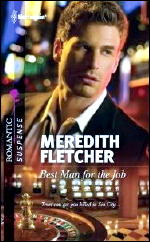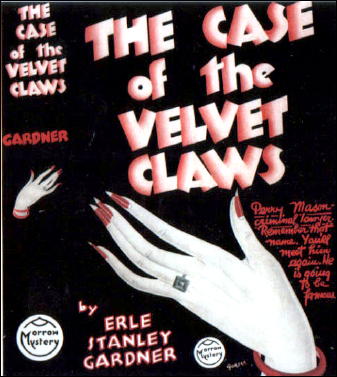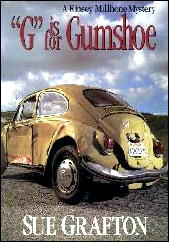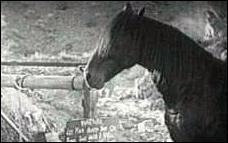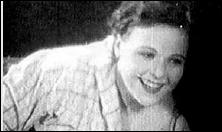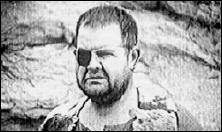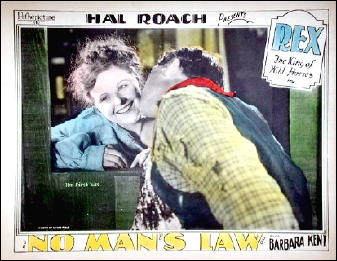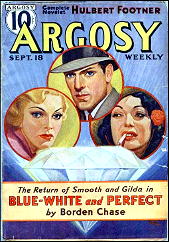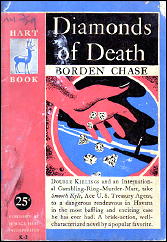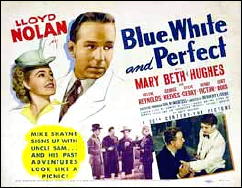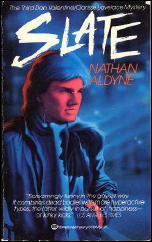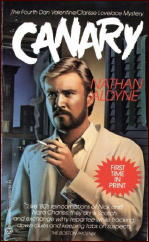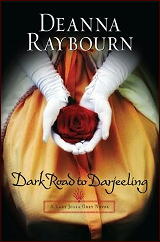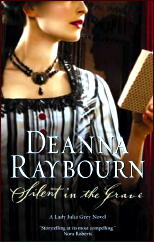PRIME TIME SUSPECTS
by TISE VAHIMAGI
Part 5.0: Theatre of Crime (US)
Taking its cue from 1930s and 1940s radio drama, the U.S. television play format (initially a live presentation) gathered strength during the 1950s. Presented in various anthology series, the form evolved from live performances to filmed episodes (as developments in broadcast technology progressed).
Unlike contemporary British television (BBC), with its roots in theatre (the stage), American television drew on professional elements from Radio and from Hollywood (when the latter saw fit to work for the small-screen). By the 1960s, some of the on-screen results were simply astounding.
The Crime and Mystery genre was represented not only by some outstanding individual plays presented in general anthology series (such as Studio One) but also by entire anthology collections dedicated to the theme. Unfortunately, most of these genre-based anthologies tended to feature ordinary television suspense yarns (usually concerning devious murderers or remorseful fugitives).
I have, therefore, omitted many of these anthologies (such as Hands of Destiny, DuMont, 1950-51; The George Sanders Mystery Theatre, NBC, 1957; Panic!, NBC, 1957) from this overview.
In the beginning, Studio One (aka Westinghouse Studio One; CBS, 1948-58) appeared to have only one thing going for it, a brutally realistic adaptation of Dashiell Hammett’s “Glass Key” (May 1949). But then, later in 1949, another Hammett appeared, “Two Sharp Knives”.
It was the beginning of a Studio One deluge, sweeping in with “The Room Upstairs” (1950), from Mildred Davis, “Shield for Murder” (1951), from William P. McGivern, “Nightfall” (1951), from David Goodis, “Mr. Mummery’s Suspicion” (1951), from Dorothy L. Sayers, and “The King in Yellow” (1951), from Raymond Chandler.
In 1952 they presented “The Devil in Velvet”, from John Dickson Carr, “They Came to Baghdad”, from Agatha Christie, “Stan, the Killer” and, later, “Black Rain” (1953), from Georges Simenon, “Little Men, Big World”, from W.R. Burnett, and “The Hospital”, from Kenneth Fearing. 1953 saw “Sentence of Death”, from Thomas Walsh. In 1954 came “Let Me Go, Lover”, from Charlotte Armstrong.
By 1955 this deluge was down to a trickle, with “Donovan’s Brain”, from Curt Siodmak, and, in 1956, “The Talented Mr. Ripley”, from Patricia Highsmith. The final drops (genre-wise) were squeezed out with “First Prize for Murder” (1957), from John D. MacDonald, and “A Dead Ringer” (1958), from James Hadley Chase. Along the way, Studio One’s two-part “The Defender” (1957), by Reginald Rose, became the inspiration for the excellent 1961-65 series The Defenders (CBS).
Taking its title literally, Suspense (CBS, 1949-54) showcased stories by Cornell Woolrich, John Dickson Carr, Craig Rice, Stanley Ellin, Robert Louis Stevenson, Edgar Allan Poe, Joel Townsley Rogers, Arthur Conan Doyle, John Collier, Geoffrey Household, Georges Simenon, Wilkie Collins, and many others. But before the mouth-watering begins, it should be noted that these plays were broadcast live and therefore less than a third of them survive.
[Places like The Museum of Broadcast Communications in Chicago, Museum of Television and Radio in New York and The Paley Center for Media in Los Angeles may have viewing copies of some surviving episodes. Then, there’s always the Internet Archive – Moving Images – Television to explore: http://www.archive.org/details/television.]
Recipient of a Special Edgar Award in 1951, The Web (CBS, 1950-54) was a live New York series presenting stories from the works of the Mystery Writers of America (MWA). Tantalizing in the extreme, especially with so little to go on in terms of detailed episode credits, one can only imagine (fantasize, even) the possible selection of genre stories translated here for television.
Living up to its name, Danger (CBS, 1950-55) certainly satisfied its viewers with moments like Philip MacDonald’s “The Green and Gold String” (1950), John Dickson Carr’s “Charles Markham, Antique Dealer” (1951), Anthony Boucher’s “Mr. Lupescu” (1951), William L. Stuart’s “Blackmail” (1953) and Daphne du Maurier’s “The Birds” (1955). At the same time the series also promoted the early careers of directors Sidney Lumet and John Frankenheimer as well as actor James Dean.
Another live and prestigious series was Robert Montgomery Presents (NBC, 1950-57) which invested in some noteworthy episodes, particularly during the earlier seasons. Included were presentations based on works by Dorothy B. Hughes, Cornell Woolrich, Raymond Chandler (“The Big Sleep”, 1950), Wilkie Collins, Mary Roberts Rinehart, Hemingway (“The Killers, 1955) and Fredric Brown.
Inner Sanctum (NBC, 1953-54) featured stories based on the popular 1940s radio series, which included Edgar Wallace as story source for “The Lonely One” (1954) and author John Roeburt as a contributor of various teleplays.
Based also on a popular radio series was the earlier Lights Out (NBC, 1949-52). Similar in atmosphere and theme to Inner Sanctum, it presented stories by Edgar Allan Poe (“The Fall of the House of Usher”, 1949; “The Masque of the Red Death”, 1951; “The Pit”, 1952), August Derleth (“Rendezvous”, 1950), Dorothy L. Sayers (“The Leopard Lady”, 1950), Ira Levin (“Leda’s Portrait”, 1951), Fredric Brown (“The Pattern”, 1951) and Cornell Woolrich (“Nightmare”, 1952).
Filmed at Elstree in England for NBC, Douglas Fairbanks Jr. Presents (NBC, 1953-57; ITV/UK from 1955) presented one particular episode which is worth being celebrated by fans of the genre because it represents the only proposal (to my knowledge) for a Bulldog Drummond TV series: the half-hour pilot episode “The Ludlow Affair” (NBC, 1957), with Robert Beatty as our hero and the scene-stealing Michael Ripper as his sidekick.
Climax! (CBS, 1954-58) got itself off to an enterprising start with Chandler’s “The Long Goodbye”, starring Dick Powell again as Marlowe, and followed it up quickly with Bayard Veiller’s “The Thirteenth Chair”, Fleming’s “Casino Royal” and Lucille Fletcher’s “Sorry, Wrong Number”.
The rest of its TV treasures consisted of works by Mary Roberts Rinehart, Eric Ambler, A.A. Fair [Erle Stanley Gardner], John D. MacDonald, George Hopley [Cornell Woolrich], Patricia Highsmith, Ursula Curtiss, Charlotte Armstrong, Ed McBain [Evan Hunter], and John Dickson Carr.
Warner Brothers Presents (ABC, 1955-57) was the umbrella title for Conflict (ABC, 1956-57), an anthology presenting compositions by Frederick Brady and Thomas Walsh as well as the first pilot (“Anything for Money”, 1957) for the influential 77 Sunset Strip (ABC, 1958-63).
Lux Video Theatre (CBS, 1950-54; NBC, 1954-57) ran for some seven years, but the NBC seasons were the ones that were of the most interest. During this period the series began featuring teleplay adaptations based on screenplays from some notable Hollywood movies. For instance, there was “Double Indemnity” (1954), “So Evil My Love” (1955), “Shadow of a Doubt” (1955), “My Name is Julia Ross” (1955), “The Suspect” (1955), “Suspicion” (1955), “Ivy” (1956), “Witness to Murder” (1956), “Mildred Pierce” (1956), “The Guilty” (1956) and “The Black Angel” (1957).
The first genre anthology to be filmed by a major studio (Universal), Alfred Hitchcock Presents (CBS, 1955-60; NBC, 1960-62) has over the decades acquired something of a mystique of its own.
Utilizing the art and craft of many screenwriters, big-screen actors and like-minded directors, the series’ producers (Joan Harrison and, later, Norman Lloyd) provided a wonderful insight into the workings of the famed Hitchcock (his Shamley Productions produced the series for which he was executive producer). Hitchcock was also savvy enough to explore the work of a vast range of lesser-known genre authors.
Story sources for Alfred Hitchcock Presents include Lillian de la Torre, C.B. Gilford, Michael Arlen, Norman Daniels, Richard Deming (1915-1983), Henry Slesar, Lawrence Treat, Roy Vickers, Harold Q. Masur, Brett Halliday [Davis Dresser], Margaret Manners, Helen Neilsen, Anthony Gilbert [Lucy Beatrice Malleson], Dorothy Salisbury Davis, and Ed Lacy.
It may not come as too much of a surprise to many readers that the highly-praised 1960 film Psycho was made at Universal by Hitchcock’s TV team, conspicuous by the striking monochromatic imagery of Shamley’s cinematographer John L. Russell.
The series was revived by NBC (1985-86) and featured colorized Hitchcock intros of the now-deceased host from the original 1950s show. Befittingly macabre or merely mindless? Then, USA Cable Network continued the title (1987-88) with some additional episodes.
Hitchcock’s Shamley Productions turned to NBC for Suspicion (NBC, 1957-58), even while Alfred Hitchcock Presents was still running over on CBS. The series consisted half-and-half of filmed (Shamley) and live presentations, including Woolrich’s “Four O’Clock”, Helen McCloy’s “The Other Side of the Curtain”, and the rarely-seen “Voice in the Night” (1958) by William Hope Hodgson. “Eye for an Eye” (1958) was the pilot episode for Ray Milland’s 1959-60 private eye series Markham (CBS).
Kraft Television Theatre became Kraft Mystery Theatre (NBC) for the summer of 1958. The series presented many fine and unexpected works, most notably Ed McBain’s [billed as Evan Hunter] “Killer’s Choice”, the Larry Cohen-scripted “The Eighty Seventh Precinct” [from the McBain novels] and “Night Cry” [from the 1948 novel by William L. Stuart; filmed in 1950 as Where the Sidewalk Ends]. Kraft Television Theatre was the last of the live shows when it faded in 1958, everybody else having already turned to filmed recordings.
There is one particularly interesting episode of the anthology Pursuit (CBS, 1958-59): “Epitaph for a Golden Girl” (1959), adapted by Lorenzo Semple Jr. from a short story by Ross MacDonald. The story originated in EQMM in June 1946 as “Find the Woman,” with MacDonald writing as Kenneth Millar. In the Pursuit adaptation, star Michael Rennie’s private detective is now called Rogers (instead of Lew Archer).
In April 1959, Westinghouse Desilu Playhouse (CBS, 1958-60) presented writer Paul Monash’s two-part “The Untouchables” which served as a suitably violent introduction to the popular and controversial series The Untouchables (ABC, 1959-63). The series helped launch the action-filled 1959 to 1962 television gangster phase (to be a later Part in this TV history overview).
A second Part of this “Theatre of Crime (US)” will follow shortly, concluding the US history of the genre anthology from the 1960s onwards.
Note: The introduction to this series of columns by Tise Vahimagi on TV mysteries and crime shows may be found here, followed by:
Part 1: Basic Characteristics (A Swift Overview)
Part 2.0: Evolution of the TV Genre (UK)
Part 2.1: Evolution of the TV Genre (US)
Part 3.0: Cold War Adventurers (The First Spy Cycle)
Part 3.1: Adventurers (Sleuths Without Portfolio).
Part 4.0: Themes and Strands (1950s Police Dramas).
Part 4.1: Themes and Strands (Durbridge Cliffhangers)
